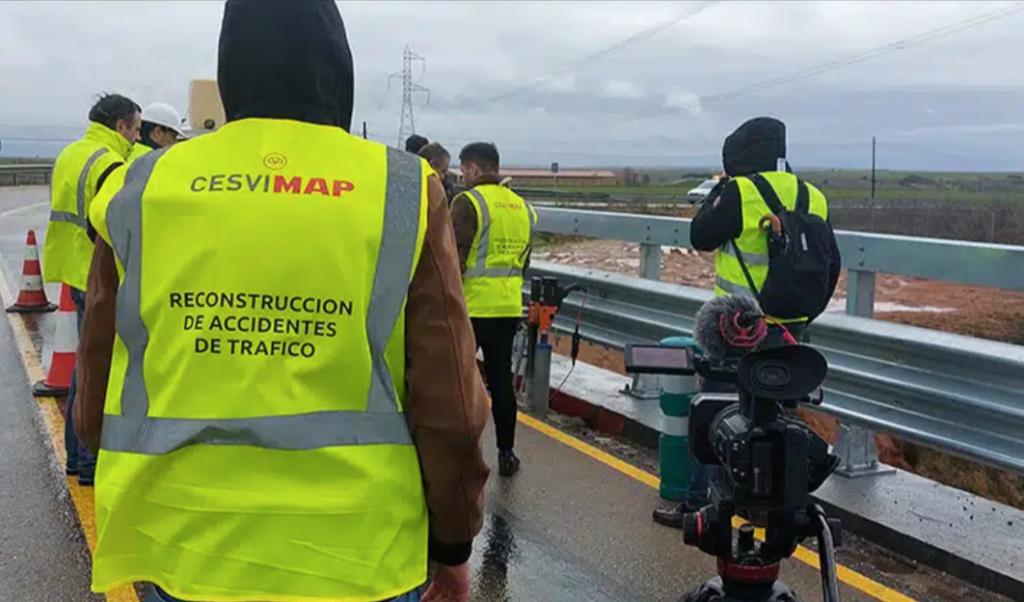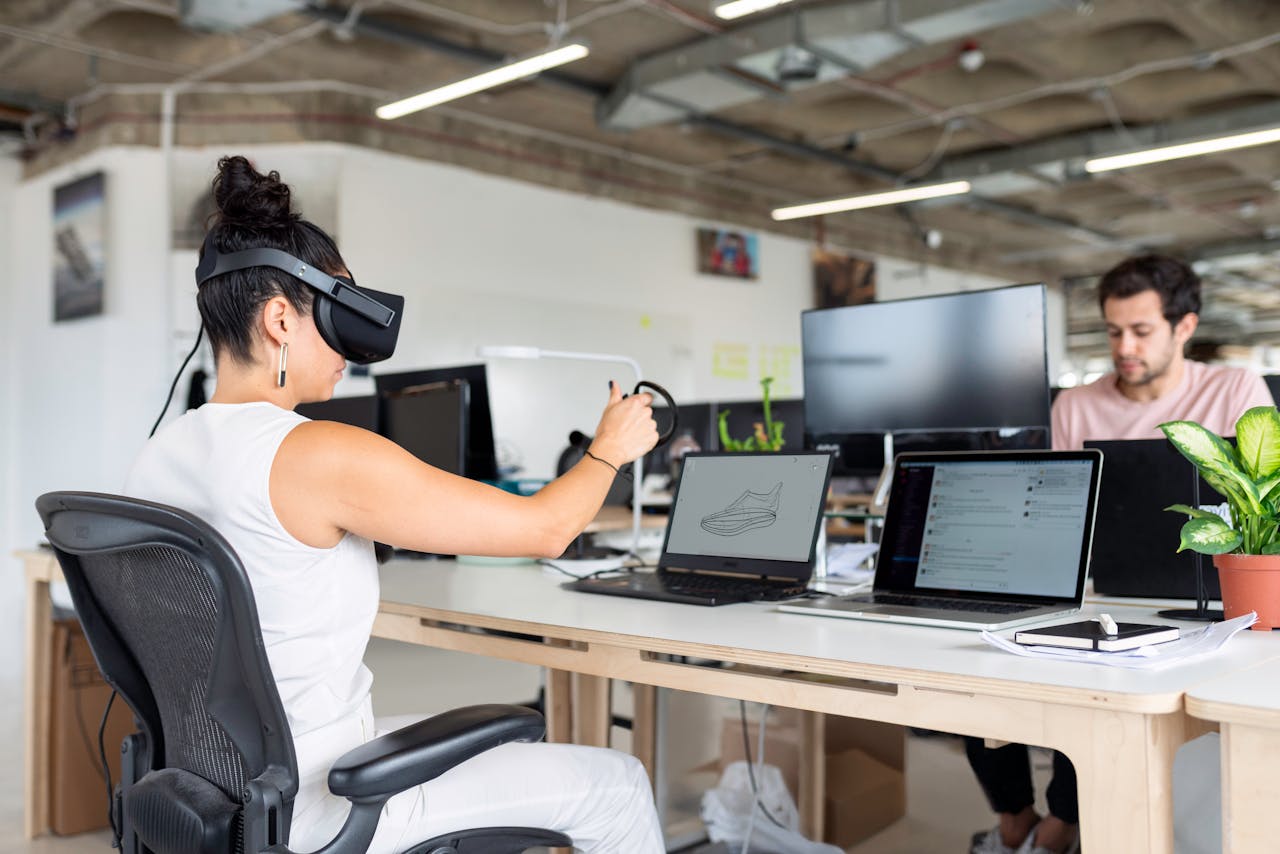A growing number of personal injury law blogs and accident claims supplier sites are highlighting how new technology is transforming accident reconstruction and road traffic accident claims and further afield.
New high-tech tools like 3D modelling, black box data, and telematics are providing more accurate ways to assess accidents and assign liability.
These advancements offer clearer insights into the causes of accidents and the severity of injuries, improving the fairness of claims.
However, while this technology offers great benefits, it also raises challenges around data privacy and evidence interpretation, which legal professionals must carefully manage.
Growing Potential
Spanish company MAPFRE has an excellent blog post on the subject. In their post called “The growing potential of technology in traffic accident reconstruction” MAPFRE focuses in three types of new advanced technologies in this area:- 3D scanning, Photogrammetry and Geographic Information Systems (GIS).
3D Scanning in Traffic Accident Investigations
First, they note that the use of 3D scanning in traffic accident investigations involves thoroughly capturing the spatial layout of the accident scene, creating highly accurate 3D digital replicas. This technique records essential details such as vehicle positions, tyre marks, and other significant elements, forming a strong foundation for in-depth analysis and precise reconstruction of the incident. This process is crucial for accurately determining the causes of the accident and assigning responsibility.
This is an example from MAPFRE’s insights on 3D scanning with road accident collision investigations:-

Photogrammetry in Accident Investigations

Second, Photogrammetry in accident investigations, by contrast focuses on precisely determining the shape, size, and spatial location of the objects involved through photographs taken at the scene. Like 3D scanning, this method recreates 3D models by converting point clouds into 3D meshes. A small number of photographs is sufficient to produce these detailed models, enabling a comprehensive and accurate analysis of the accident scene.
Geographic Information Systems (GIS) in Traffic Accident Reconstruction
And third, the application of Geographic Information Systems (GIS) in traffic accident reconstruction offers significant advantages. By utilising geographic data, digital replicas can be created to include real-time information about the incident, showcasing the road network and its features. This allows for more detailed previews, measurements, and analysis of the accident scene.
Want to know more about GIS? This helpful video from YouTube explains more of the basics here:-
Emerging Technologies Impacting Vehicle Accident Reconstruction
In an article from Envista Forensics on “How Emerging Technologies Impact Vehicle Accident Reconstruction” they note that advancements in vehicle technologies have significantly impacted how vehicle accidents are reconstructed. Modern vehicles are equipped with a variety of digital systems, such as Event Data Recorders (EDRs), infotainment systems, and collision mitigation systems, which record critical data before and during a crash. These systems provide detailed insights into vehicle speed, driver actions, and even seatbelt usage. Investigators can extract and analyse this data, along with GPS information and video footage, to reconstruct collisions more accurately. As technology evolves, the complexity and amount of data available for accident reconstruction will continue to grow, making expert analysis crucial.
Their expert, Robert Townsley says that “[m]odern collision reconstruction is highly focused on the collection and analysis of intricate and complicated data. Whether that means extracting sophisticated digital data from vehicles, cellphones, or dashcams, using a 3D scanner to compare the crush profile of a damaged vehicle to an undamaged vehicle, using a remotely piloted aircraft to measure and document a collision scene, or creating a photorealistic computer simulation of the pre-and post-collision vehicle movements, advancements in technology have significantly increased the accuracy of collision analyses. The amount and complexity of data are only going to increase, furthering the need for a qualified analyst to extract and analyze the data.”
Personal Injury Trainee Solicitor Charlotte Henshall on Claire Baker’s Insights from the Rehab Conference 2024
In a recent blog post from Switalskis on “The importance of accident reconstruction In personal injury claims” author and Trainee Personal Injury Solicitor Charlotte Henshall included insights on the role of technology in personal injury claims from the Rehab Conference 2024.
At the Rehab Conference 2024, accident reconstruction in personal injury claims took centre stage, with Claire Baker from the Dyson School of Design Engineering highlighting the crucial role of technology. Using the example of ‘Steve’, a claimant who suffered a traumatic brain injury (TBI) in a road accident, Claire explained how technology can reconstruct the incident, helping to determine liability and the extent of injuries. Claire’s research emphasised that accident reconstruction specialists analyse data such as vehicle damage, skid marks, and dashcam footage to recreate accidents using computer programmes. “Accident reconstruction can help provide clarity for legal disputes and assist in determining liability,” Claire noted, stressing how it enhances the litigation process by allowing solicitors to understand the exact sequence of events.
In ‘Steve’s’ case, the technology was able to simulate different scenarios, like whether he was walking or running across the road, providing a detailed understanding of the injuries he sustained. Claire also highlighted the use of MRIs and brain strain data to predict long-term consequences, which can improve post-crash care and emergency response.
Beyond individual cases, accident reconstruction has the potential to influence future vehicle designs and improve road safety. As Claire stated, “More must be done to protect vulnerable road users like cyclists and pedestrians,” pushing for changes in vehicle design and infrastructure.
Lexis Webinars on Obtaining Best Evidence in Collision Reconstruction
And, for further reading on the subject, Lexis Webinars have launched a series of six webinars on “Obtaining best evidence in collision reconstruction” . They note that “[w]hen dealing with personal injury claims or criminal cases involving road traffic collisions, it is essential to have as full an understanding as possible about the circumstances surrounding the incident. Recent technological developments have made new techniques available, such as 3D laser scanning and simulation, which can provide much more information to assist with this. To help you understand the latest cutting-edge advancements in the analysis of road traffic collisions, as well as what to expect from a collision reconstruction expert, we have produced a series of 6 short webinars in collaboration with Forensic Collision Investigation and Reconstruction Ltd (FCIR), a leading consultancy in the field of forensic collision investigation.
These webinars, which will be free to view, will be relevant to personal injury lawyers representing both claimant or defendant as well as criminal lawyers”
Who Should You Call? Expert Services on Collision Investigation and Accident Reconstruction
And there are now expert services available specifically tailored to this field – such as TRL who provide collision investigation and accident reconstruction services. As they note “TRL has grown its investigations discipline and offers a differentiated service for our clients. We have a large team of independent, industry leading experts with many years of experience in all areas of collision investigation who are also able to draw upon the knowledge of highly qualified experts in transportation across our organisation.”
There will be others out there and it’s worth shopping around for other great suppliers in this emerging area of specialism.
Conclusions – A Valuable Tool for Personal Injury Claims
Overall, technology in accident reconstruction offers valuable tools to improve personal injury claims, from determining liability to preventing future accidents. It will be interesting to see how this area of personal injury technology develops in practice both in the UK and further afield.

